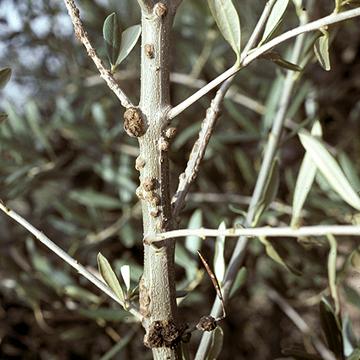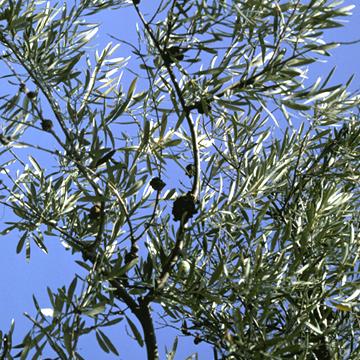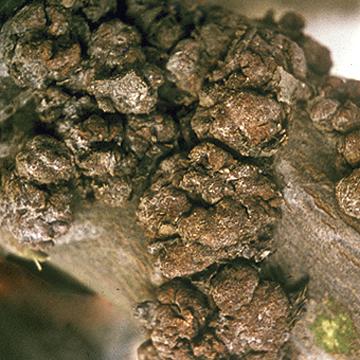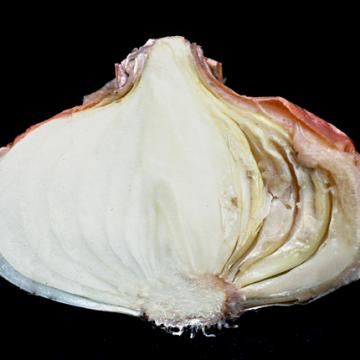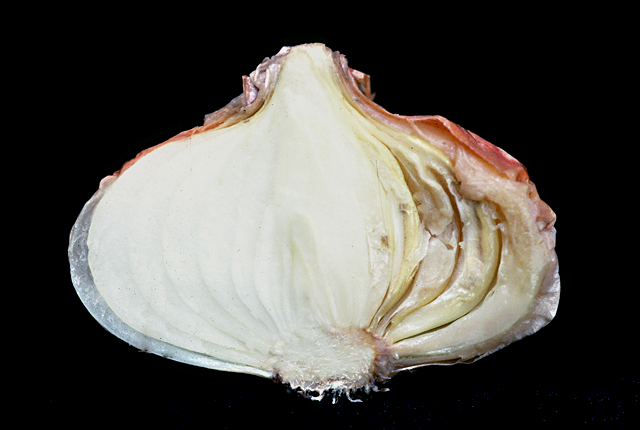DISEASE: Olive knot
HOST: Olive
Multiple infections of young stems. The bacterium invades vascular tissues during certain times of the year and may be isolated from branches that appear healthy.
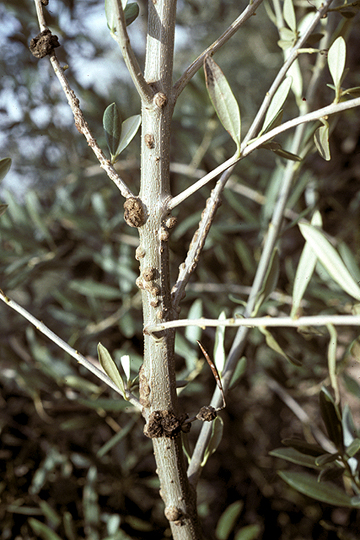
Olive knot | Olive
DISEASE: Olive knot
HOST: Olive (Olea europaea)
PATHOGEN: Pseudomonas savastanoi pv. savastanoi
SOURCE: M. Schroth
DISEASE: Olive knot
HOST: Olive
Tree with knots/galls on branches along with twig dieback, which is associated with knots. Fusarium and Diplodia spp. infect through knots and are thought to be main reason for dieback.
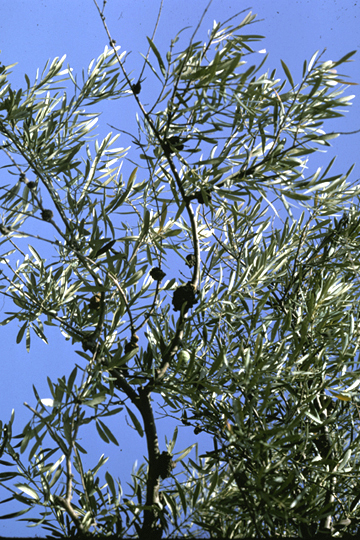
Olive knot | Olive
DISEASE: Olive knot
HOST: Olive (Olea europaea)
PATHOGEN: Pseudomonas savastanoi pv. savastanoi
SOURCE: M. Schroth
DISEASE: Olive knot
HOST: Olive
Multiple infections on olive branch. Knots at this stage begin to die from the outside in and are infected by several fungi.

Olive knot | Olive
DISEASE: Olive knot
HOST: Olive (Olea europaea)
PATHOGEN: Pseudomonas savastanoi pv. savastanoi
SOURCE: M. Schroth
DISEASE: Rugose leaf curl
HOST: Clover
Two rugose, distorted white clover leaves and a healthy leaf. Rugose leaf curl is caused by an unidentified phloem-infecting bacterium.
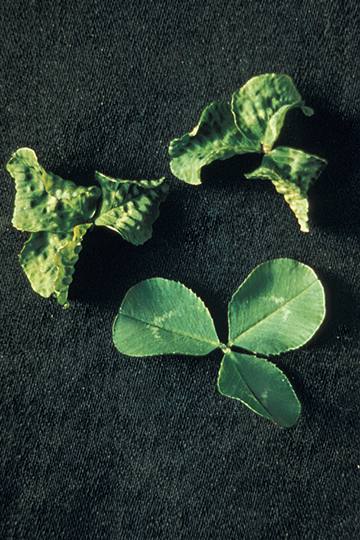
Rugose leaf curl | Clover
DISEASE: Rugose leaf curl
HOST: Clover (Trifolium repens)
PATHOGEN: Phloem-infecting bacterium
SOURCE: D. Teakle
DISEASE: Sour skin
HOST: Onion
Symptoms of sour skin are characterized by slimy, pale yellow to light brown decay.
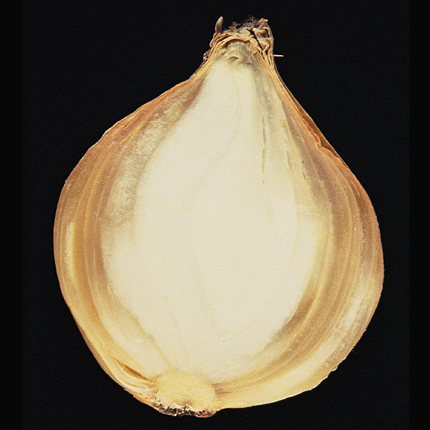
Sour skin | Onion
DISEASE: Sour skin
HOST: Onion (Allium cepa)
PATHOGEN: Burkholderia cepacia
PATHOGEN SYNONYM: Pseudomonas cepacia
SOURCE: Dep. of Agric. & Agri-Food, Government of Canada


